We recently completed a major enhancement to the Home Page feature of Recollective by allowing multiple pages to be defined and targeted to select groups of users. Furthermore, we took the entire Home Page capability and made it available at the site-level.
The longer a study lasts, the more Recollective acts as an online community for the participants. We recognize that community-supporting features have become increasingly important and one such feature is home pages. Customizable card-based pages are ideal for delivering content and guiding returning participants.
Equally important are the stakeholders that commission studies. They want to feel connected to the activities within a site without burrowing too deeply into the raw data. Now that pages can be privately shared, analysts and moderators have a new way to share their findings with each other and their clients.
This improvement is one of many in our Product Update: March 2021.
Home Pages
Every Recollective study starts with a Home tab which is a single page made up of cards. These cards are either static (e.g. text, photos, videos and files) or dynamic (upcoming activities, points leaderboard, recent visitors, starred discussions, etc.). This feature has now been added to the site-level which sits above all studies and both areas now support the creation of multiple pages.

Any number of cards can be arranged on a single page. Some common uses include:
- Welcoming participants (message or video card)
- Introducing study moderators (message or people card)
- Offering guidance on platform usage (video or file card)
- Sharing blog-style updates (message card)
- Linking to external resources (message card)
- Promoting upcoming activities (activity card)
- Highlighting discussion topics (discussions card)
- Listing recent visitors (people card)
- Displaying a leaderboard (people card)
- Decorating and branding a page (photo card)
From a styling perspective, each page can have a unique background colour or background image. Individual cards can be assigned a style preset and be resized as needed.
It is possible to limit the visibility of individual cards on a page, but we now recommend managing access at the page-level as that will greatly simplify content management.
Study and site-level pages are equally functional except there are a few card types that are exclusive to studies given they summarize content or people belonging to a study. Over time, we plan to add card types that can pull in data from multiple sources onto a single page.
The remainder of this blog post highlights new functionality that is applicable to both levels, despite the examples showcasing only site-level pages.
Managing Pages
Selecting the name of a page will now open a menu of available pages.

Analysts are provided access to a Manage Pages dialog that permits pages to be added, edited, grouped, moved, archived and deleted.
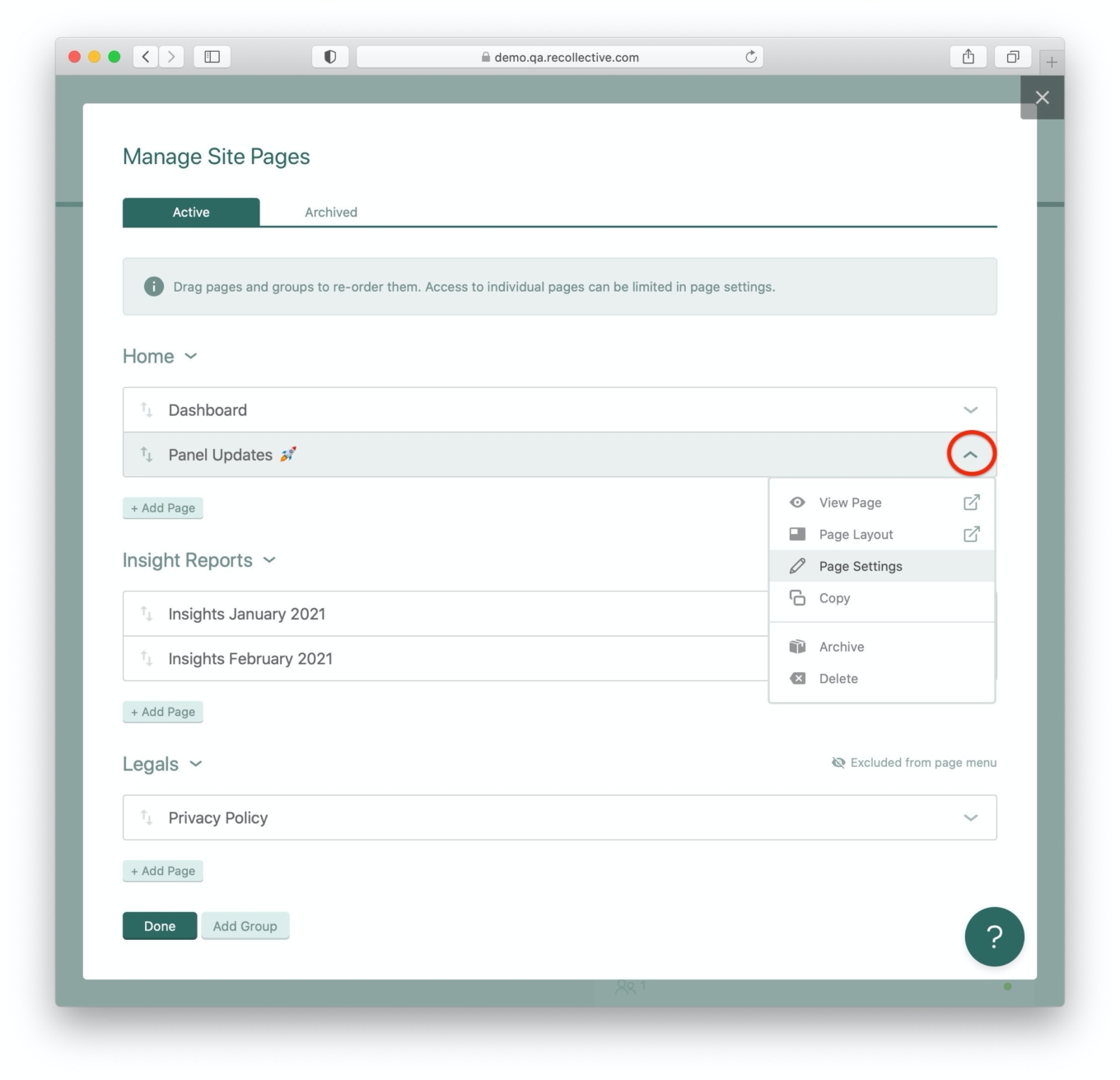
Access to individual pages can now be set for participants and administrators. Participant access can be disabled or limited to select segments.
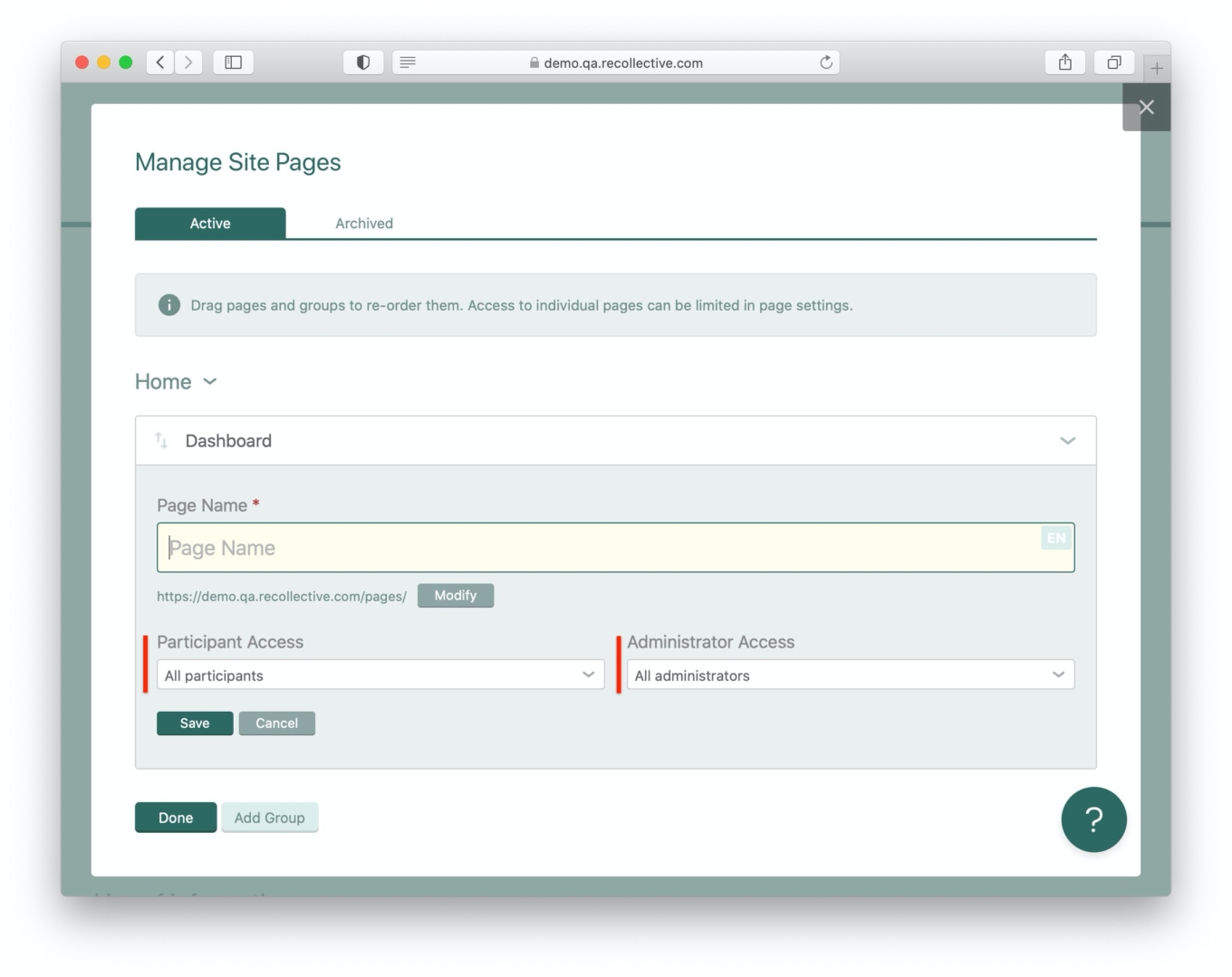
Page access can also be limited to select admin roles (i.e. Analysts, Moderators and Clients) or shared with specific administrators. Clients, for example, could now be given their very own page which summarizes only the most relevant insights.
When entering a site or study, the first page that is visible to a user will appear by default. Clients can therefore be shown a home page that differs from participants by placing the admin-only pages above all other pages.
Page Grouping
To ensure page management scales over the long term, pages are organized into groups. Page groups are used to combine related pages in the page navigation menu.
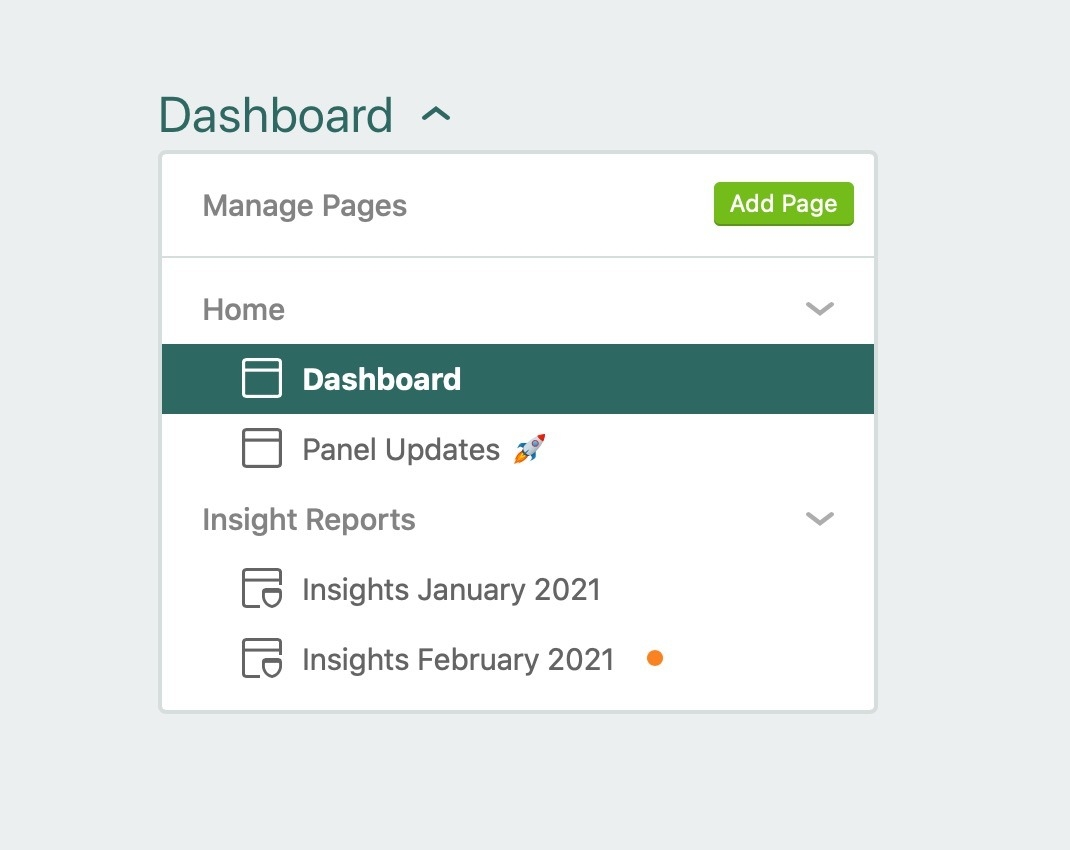
Navigating between pages is accomplished by selecting the title of the current page and browsing available pages. Only pages a user can access will be listed. If all pages in a group are hidden, the group won't appear.
Each page has a customizable address which allows it to be referenced from any other location in the site. We strongly recommend using Message cards to promote important pages by directly linking to them.
Hidden but Accessible Pages
The grouping of pages serves an additional purpose which is that it allows an entire set of pages to be hidden from the page menu without limiting who can access them. This is ideal for pages that are only relevant in specific contexts.

For example, if you wish to publish additional legal terms or a privacy policy, you might prefer to link to those pages from an area like the site footer or an agreement. Message cards and File cards are ideal for placing such content on the page.
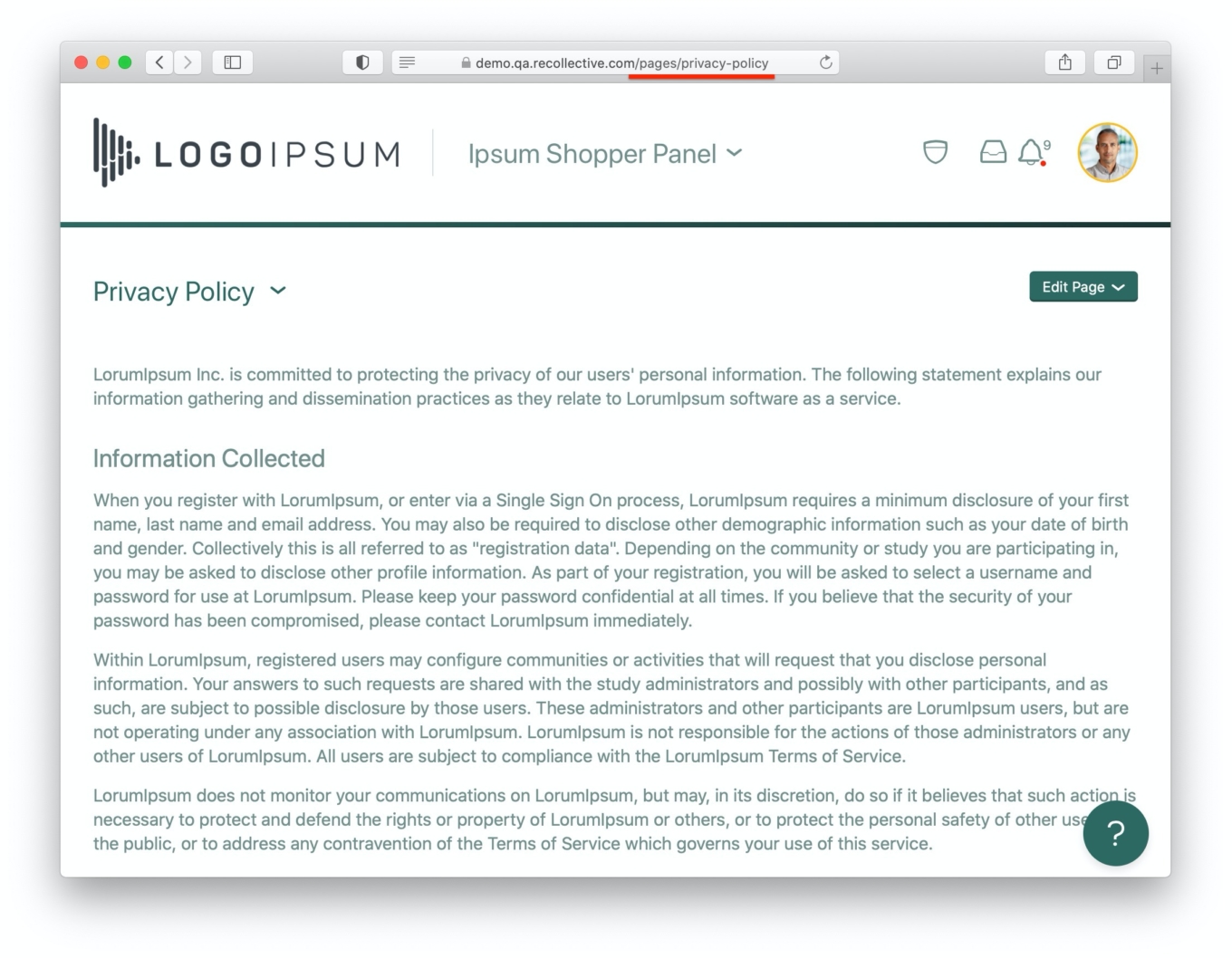
Site-Level Preview
To help Analysts test their page and card configurations, a popular feature within studies called Preview Mode has been made available at the site-level. Preview Mode can now be initiated by selecting your avatar in the top-right corner and selecting Preview Mode from the menu.

A bright yellow toolbar will appear below the site header to signal that Preview Mode is in effect. The toolbar allows Analysts to change the role and segments being previewed.

Default Pages
All sites and studies start with a default page which has a preset layout of cards. This default page can be customized or removed entirely. You can also revert a page back to the default layout of cards at any time.
The default page for a site is very simple as it contains a single card. It is a new Studies Card which lists the studies available to the current user.
New: Studies Card
The list of studies on a site home page is in fact a new type of card called the Studies Card. It is another key improvement in this release.
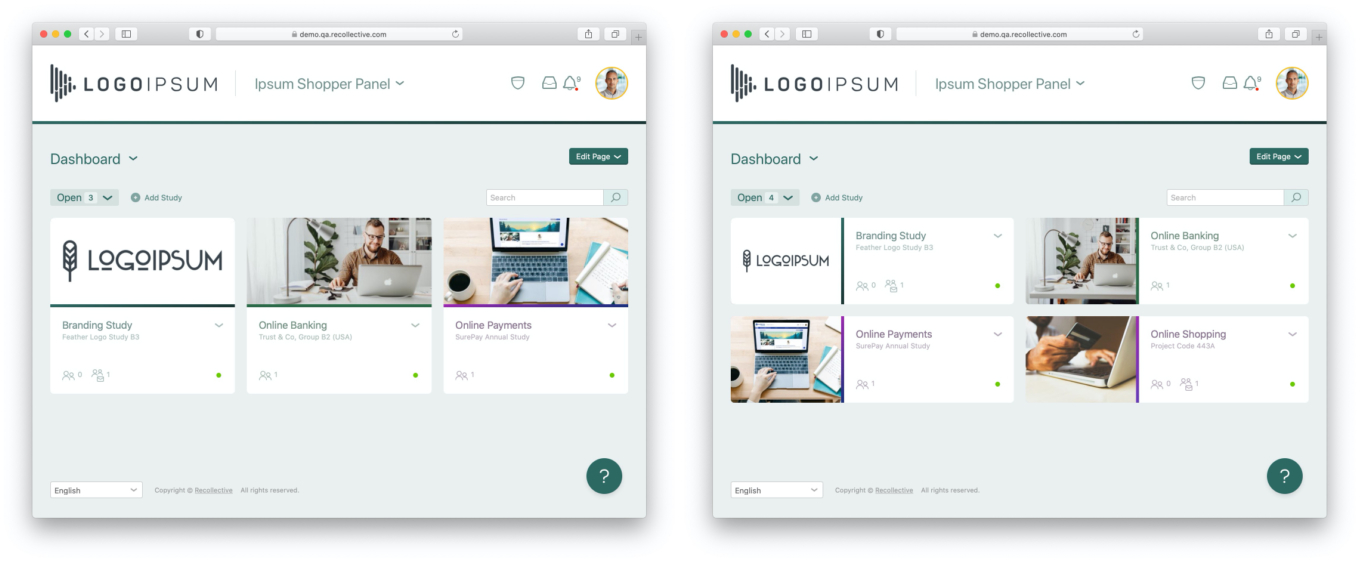
The Studies Card offers analysts greater control over the appearance of the studies listed and it has been designed to load more quickly.

It includes a rapid keyword search that instantly locates studies as you type a search term. For sites with dozens of studies, listings are now paginated to improve performance and usability.
Studies can appear as square cards or compact horizontal cards. The compact version will appear by default. To change the style, simply edit the Page Layout and then modify the properties of the Studies Card.

Note that both study list options provide enough space for long study names and will now include the study's External Study ID. This is an optional identifier only administrators will see. It allows disambiguation of studies with similar or generic names. An External Study ID can be set when adding a study or in Study Settings > Appearance.
The Add Study control can now be found at the top of the study list and a new flow helps Analysts save time. You are now able to define the study's name, address, External Study ID, language and time zone all at once. All other settings can be customized after the study is created via Study Settings.
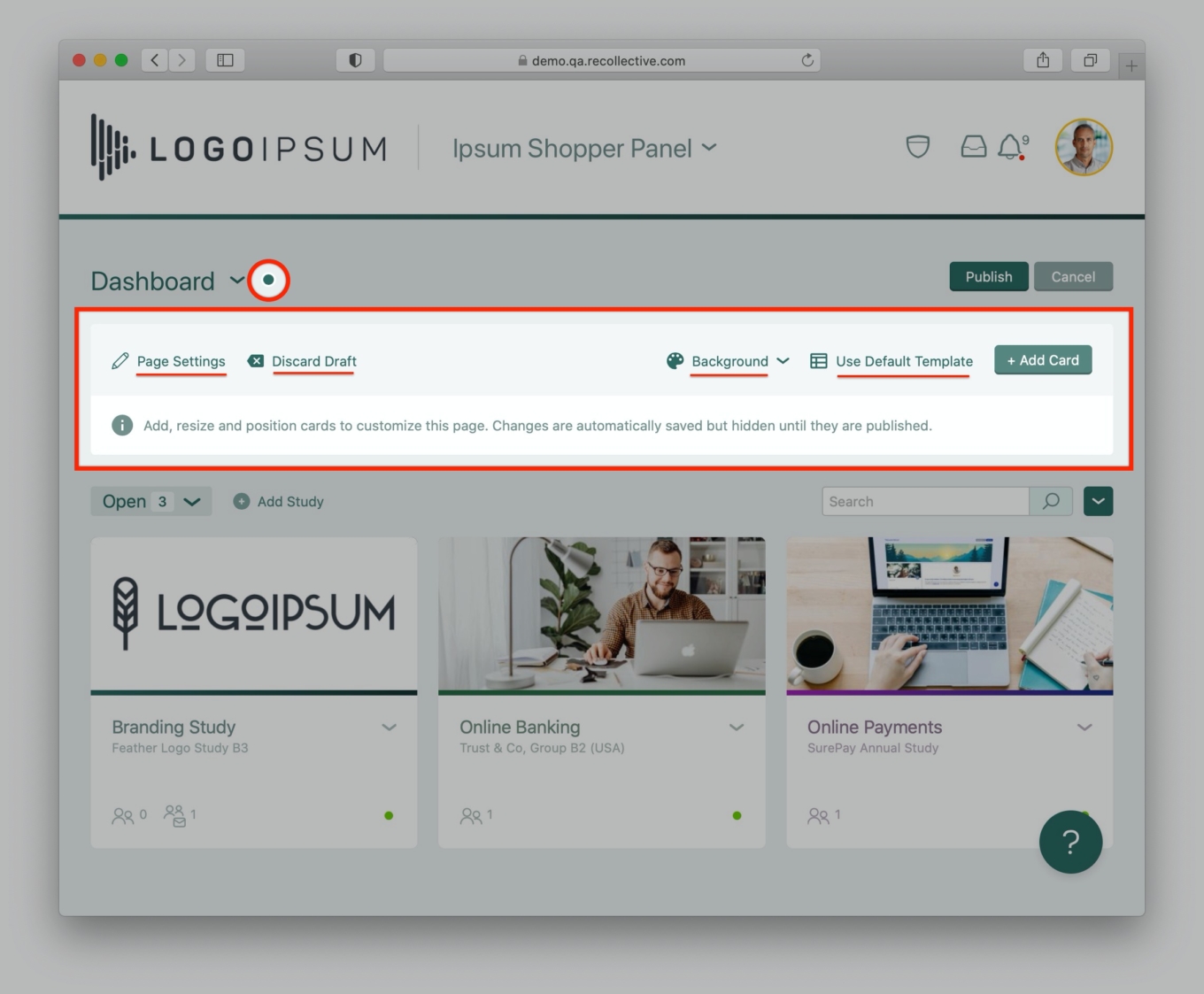
Page Editing
The way pages are customized has not really changed but we've updated the flow to make it more intuitive. Previously, pages were always editable and any change created a new draft that could be published. We've simplified this by displaying the published version of a page without editing controls and instead offering an Edit Page button on the top-right.

Pressing the Edit Page button will reveal three options:
- Page Layout (add/edit cards and their content)
- Page Settings (edit the page's name, address and visibility)
- Manage Pages (edit how a page is grouped and positioned)
Select Page Layout to add, update or remove any cards on the page. A toolbar will now appear which confirms you are in edit mode. Changes made in this mode are saved automatically as an unpublished draft.

While editing the layout of a page, an Add Card button can be selected to create a new card for the page. Each card has a menu which allows you to re-edit, style or remove the card. You can also click-and-drag the edges of a card to change its width or drag the entire card to a new position on the page.
When ready, press Publish to instantly share the changes, or choose Discard Draft to delete all the changes made.
If there is already a page that can serve as a template for another, select Manage Pages and access the menu for the page and select Copy. The selected page will be instantly duplicated as a new and unpublished page which can be customized before it's published.

Once a page is no longer relevant, the Manage Pages dialog allows pages to be archived or deleted. Archiving a page is recommended if you may restore the page or duplicate its layout as a template for new pages in the future.
Conclusion
The enhancement of the home page capabilities is one of the many features planned to help make Recollective support larger communities. We hope you find these enhancements useful and we look forward to your feedback.
If you don't see these new capabilities on your site yet, please be patient as they will appear in next few days. Be sure to read about all the other great enhancements coming in this release.







.svg)